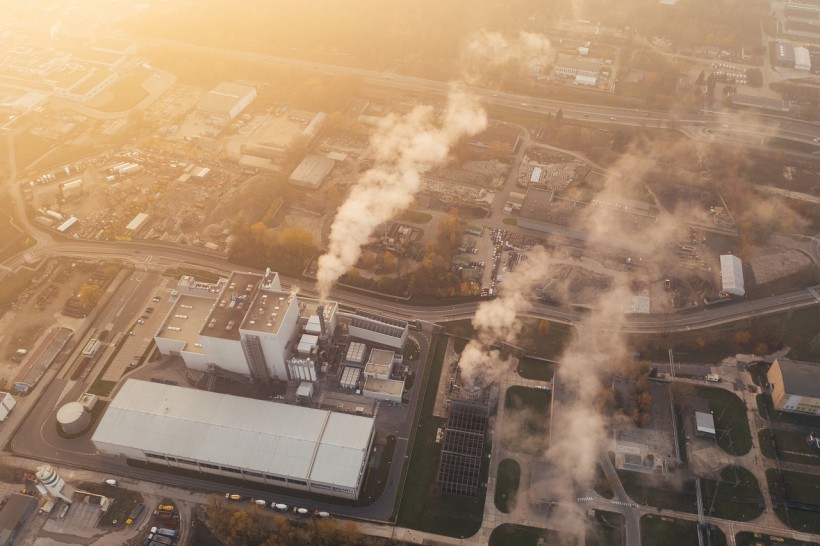Scientists from Oregon State University led a scientific collaboration that resulted in a new chemical compound, which harvests carbon dioxide from smokestacks and converts them to commercially valuable chemicals.
In the study titled "Lanthanide Metal-Organic Frameworks for the Fixation of CO2 Under Aqueous-Rich and Mixed-Gas Condition," published in the Journal of Materials Chemistry A, researchers reported that the new metal-organic framework containing a common industrial chemical called propylene oxide can catalyze cyclic carbonates production while scrubbing off carbon dioxide in smoke flue tubes.

New Technology Harvests Carbon Dioxide From Smokestacks to Create Useful Chemicals
A Boost for Green Economy Initiatives
According to Technology Networks, the findings of the study imply that the new technology is a boost for green economy initiatives because of its useful applications in various industrial fields, such as pharmaceutical precursors and battery electrolytes that are derived from a similar process of cleaning emissions from manufacturing facilities.
This effort aims to curb the harmful effects of carbon dioxide, a greenhouse gas produced from burning fossil fuels, which is the major cause of climate change.
Meanwhile, cyclic carbonates produced from the synthesis of propargyl alcohol derivatives and carbon dioxide also have a tremendous industrial interest because they are used as diluents, solvents, reagents, and monomers for polymers.
In the new research, scientists were able to develop the 3D lanthanide-based metal-organic framework (MOF) to catalyze cyclic carbonates from biogas, which is composed of methane, carbon dioxide, and other gases derived from decomposing organic matter.
Lanthanides are soft and silvery-white metals used to make night vision goggles, flints of cigarette lighters, and many others. Some examples of lanthanides are cerium, europium, and gadolinium.
ALSO READ: Carbon Dioxide Waste Can Now Be Converted to Butanol With a More Efficient Cathode Material
Novel MOF Acts as Catalysis of Carbon Dioxide Into Cyclic Carbonates
The novel MOF is a compound material in which its metals are used as a base that is interlaced with other organic crystals, ZME Science reported. The propylene oxide acts as a catalyst for the quick and easy conversion of carbon dioxide gas into the valuable chemical substance cyclic carbonates.
Scientists said that the best part of this new technology is that it scrubs off carbon dioxide out of flue tubes in the process and essentially uses it to extract the greenhouse gas from the smoke and the biogas. Since the novel MOF is based on lanthanides, researchers said it has good chemical stability due to lanthanide ions.
They noted that this is important because the novel MOF will be exposed to hot, high in humidity, and acidic gases. It will be the binder to hold active organic materials in place to speed up the conversion of carbon dioxide into cyclic carbonates.
Also, the existence of other gases in biogas and industrial emissions do not bother lanthanide MOFs because they are known to be selective for carbon dioxide.
RELATED ARTICLE: How Sun-Powered Chemistry Can Transform Carbon Dioxide Into Essential Products
Check out more news and information on Carbon Dioxide in Science Times.














